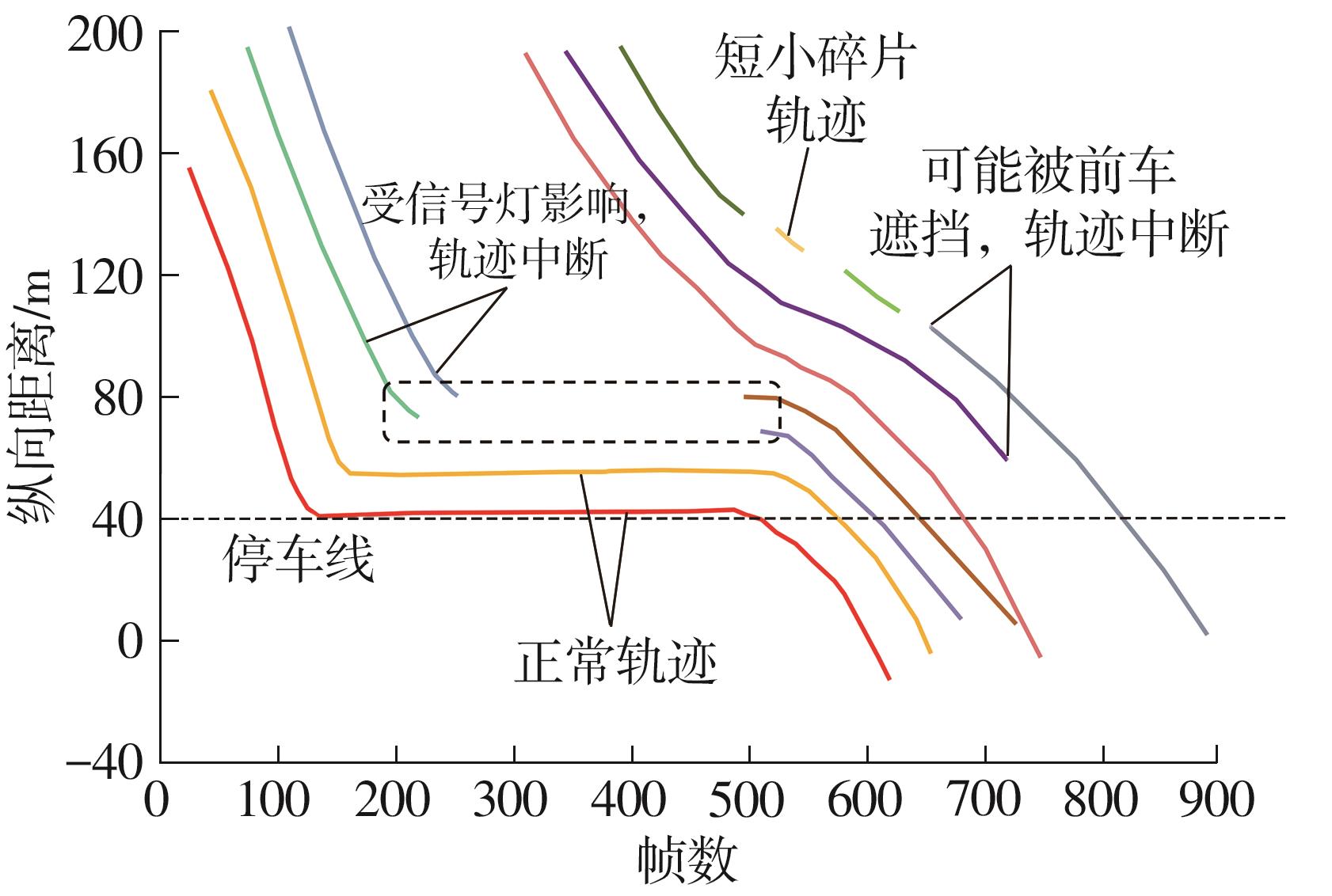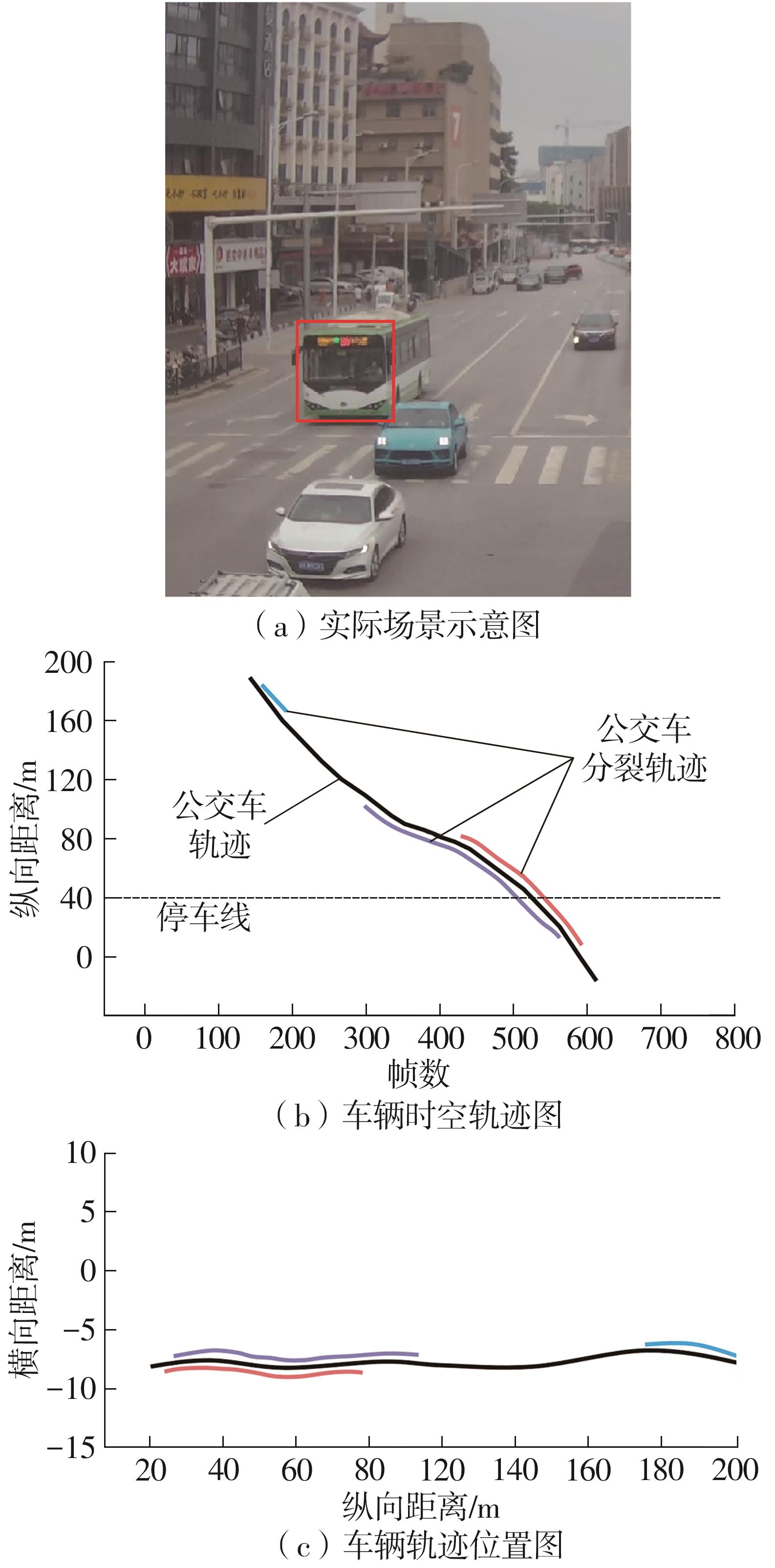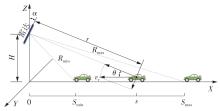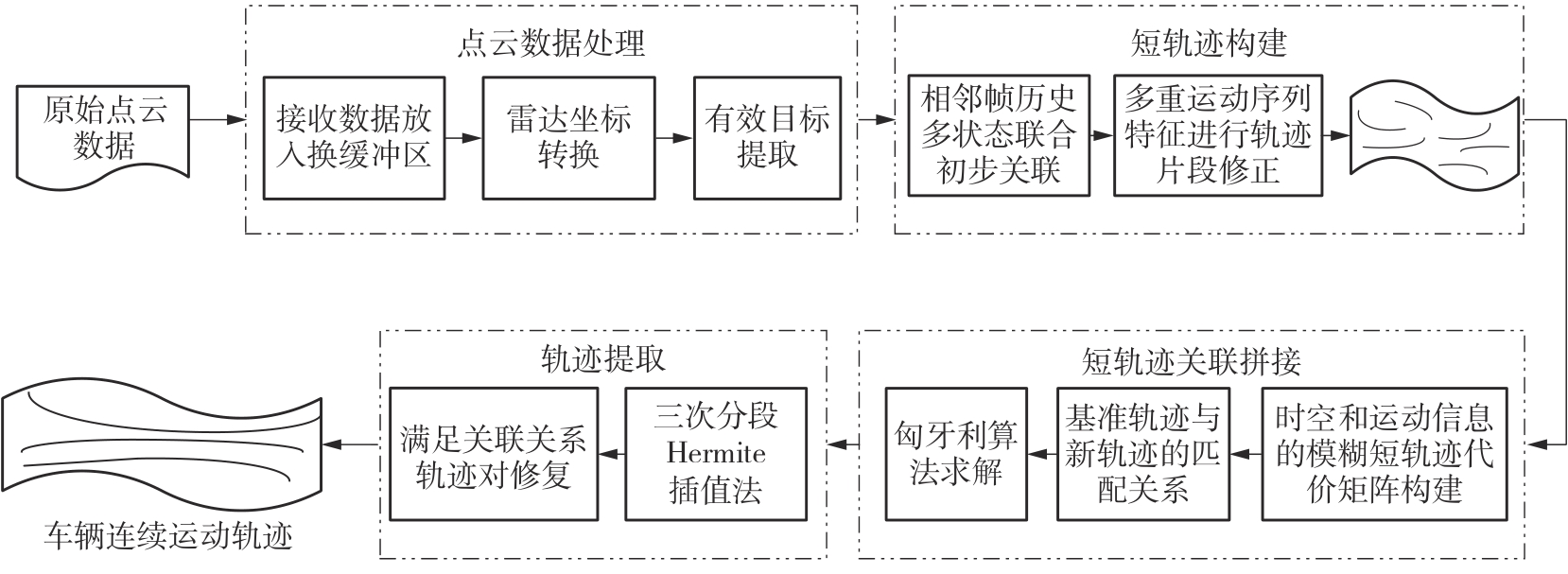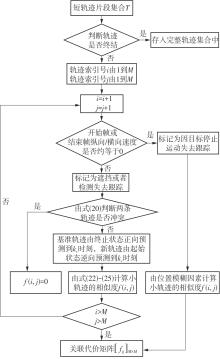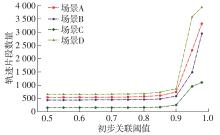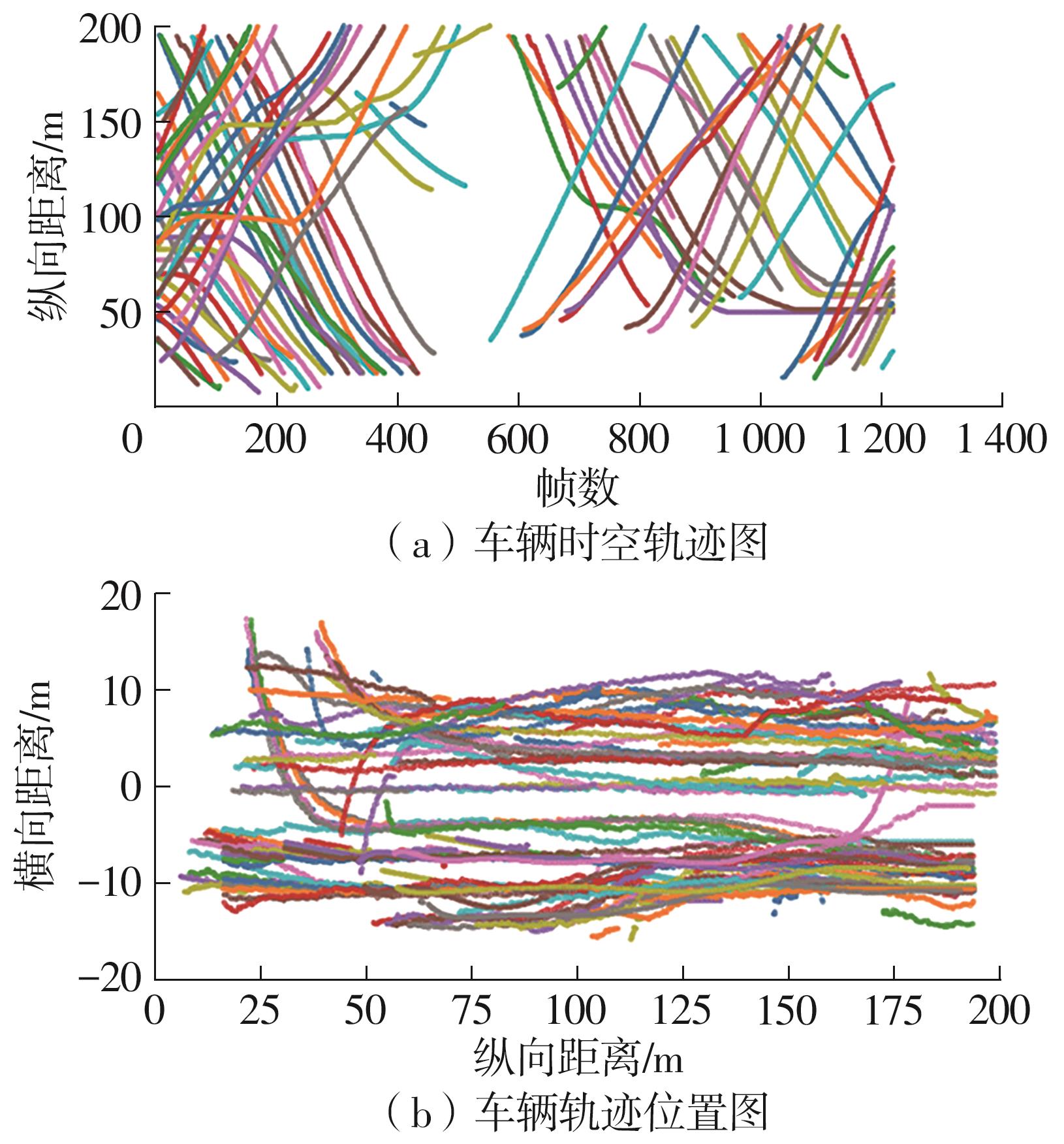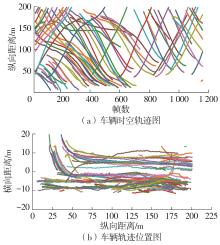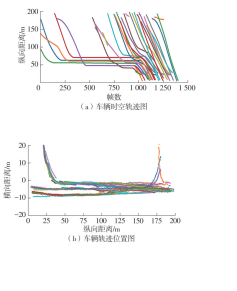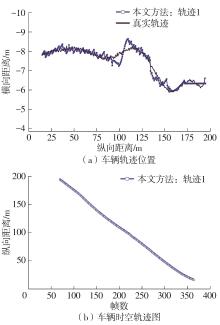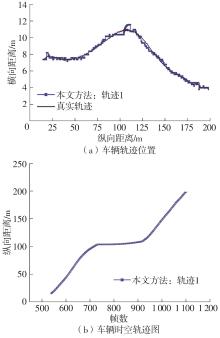Journal of South China University of Technology(Natural Science Edition) ›› 2023, Vol. 51 ›› Issue (10): 110-125.doi: 10.12141/j.issn.1000-565X.230100
Special Issue: 2023绿色智慧交通系统专辑
• Green, Intelligent Traffic System • Previous Articles Next Articles
Vehicle Trajectory Tracking at Intersections Based on Millimeter Wave Radar Point Cloud
LIN Yongjie1,2 CHEN Ning1 LU Kai1,2
- 1.School of Civil Engineering and Transportation,South China University of Technology,Guangzhou 510640,Guangdong,China
2.Guangdong Artificial Intelligence and Digital Economy Laboratory,Guangzhou 510330,Guangdong,China
-
Received:2022-03-08Online:2023-10-25Published:2023-06-06 -
Contact:卢凯(1979-),男,教授,博士生导师,主要从事交通信号控制、交通大数据挖掘和车路协同研究。 E-mail:kailu@scut.edu.cn -
About author:林永杰(1987-),男,副教授,博士生导师,主要从事交通检测与数据建模、交通信号控制、车路协同研究。E-mail:linyjscut@scut.edu.cn -
Supported by:the Natural Science Foundation of Guangdong Province Youth Enhancement Project(2023A1515030120);the National Natural Science Foundation of China(61903145)
CLC Number:
Cite this article
LIN Yongjie, CHEN Ning, LU Kai. Vehicle Trajectory Tracking at Intersections Based on Millimeter Wave Radar Point Cloud[J]. Journal of South China University of Technology(Natural Science Edition), 2023, 51(10): 110-125.
share this article
| 1 | NASERNEJAD P, SAYED T, AlSALEH R .Modeling pedestrian behavior in pedestrian vehicle near misses:a continuous gaussian process inverse reinforcement learning (GP-IRL) approach[J].Accident Analysis and Prevention,2021,161:106355/1-15. |
| 2 | 马小龙,余强,刘建蓓 .基于路侧毫米波雷达的车辆碰撞概率计算方法[J].交通运输系统工程与信息,2022,22(1):57-66. |
| MA Xiao-long, YU Qiang, LIU Jian-bei .A calculation method of vehicle collision probability based on roadside millimeter wave radar[J].Journal of Transportation Systems Engineering and Information Technology,2022,22(1):57-66. | |
| 3 | CHEN Q, GU R, HUANG H,et al .Using vehicular trajectory data to explore risky factors and unobserved heterogeneity during lane-changing[J].Accident Analysis and Prevention,2021,151:106355/1-9. |
| 4 | 游峰,梁健中,曹水金,等 .面向多目标跟踪的密集行人群轨迹提取和运动语义感知[J].交通运输系统工程与信息,2021,21(6):42-54. |
| YOU Feng, LIANG Jian-zhong, CAO Shui-jin,et al .Dense pedestrian crowd trajectory extraction and motion semantic information perception based on multi-object tracking[J].Journal of Transportation Systems Engineering and Information Technology,2021,21(6):42-54. | |
| 5 | FU T, HU W, MIRANDA-MORENO L,et al .Investigating secondary pedestrian-vehicle interactions at non-signalized intersections using vision-based trajectory data[J].Transportation Research Part C:Emerging Technologies,2019,105:222-240. |
| 6 | CHEN J, TIAN S, XU H,et al .Architecture of vehicle trajectories extraction with roadside Lidar serving connected vehicles[J].IEEE Access,2019,7:100406-100415. |
| 7 | 辜志强,吉鑫钰,褚端峰,等 .基于全局位置精度损失最小化的路侧多传感器目标关联匹配方法[J].中国公路学报,2022,35(3):286-294. |
| GU Zhi-qiang, JI Xin-yu, CHU Duan-feng,et al .A roadside multi-sensor target association matching method based on minimization of global position precision loss[J].China Journal of Highway and Transport,2022,35(3):286-294. | |
| 8 | PANTRIGO J, HERNÁNDEZ J, SÁNCHEZ A .Multiple and variable target visual tracking for video-surveillance applications[J].Pattern Recognition Letters,2010,31(12):1577-1590. |
| 9 | CHEN X, LI Z, YANG Y,et al .High-resolution vehicle trajectory extraction and denoising from aerial videos[J].IEEE Transactions on Intelligent Transportation Systems,2021,22(5):3190-3202. |
| 10 | ZHANG J, XIAO W, COIFMAN B,et al .Vehicle tracking and speed estimation from roadside Lidar[J].IEEE Journal of Selected Topics in Applied Earth Observations and Remote Sensing,2020,13:5597-5608. |
| 11 | ZANG S, DING M, SMITH D,et al .The impact of adverse weather conditions on autonomous vehicles:how Rain,snow,fog,and hail affect the performance of a self-driving car[J].IEEE Vehicular Technology Magazine,2019,14(2):103-111. |
| 12 | SALOUS S, GAILLOT D, MOLINA J M,et al .Inclusive radio communications for 5G and beyond:IRACON channel measurements and models[M].Pittsburgh:Academic Press,2021:49-105. |
| 13 | JIANG W, HUANG Y, YANG J .Automatic censoring CFAR detector based on ordered data difference for low-flying helicopter safety[J].Sensors,2016,16(7):1055. |
| 14 | LUDENO G, CATAPANO I, RENGA A,et al .Assessment of a Micro-UAV system for microwave tomography radar imaging[J].Remote Sensing of Environment,2018,212:90-102. |
| 15 | LIU H, TENG K,RAI L,et al .A two‐step abnormal data analysis and processing method for millimetre‐wave radar in traffic flow detection applications[J].IET Intelligent Transport Systems,2021,15(5):671-682. |
| 16 | 刘东波,沈莉潇,代磊磊,等 .基于多目标雷达数据的单点交通信号控制方法[J].吉林大学学报(工学版),2022,52(10):2456-2465. |
| LIU Dong-bo, SHEN Li-xiao, DAI Lei-lei,et al .Traffic signal control method at isolated intersections based on multi-target radar data[J].Journal of Jilin University (Engineering and Technology Edition),2022,52(10):2456-2465. | |
| 17 | LIU G, ZHOU M, WANG L,et al .A blind spot detection and warning system based on millimeter wave radar for driver assistance[J].Optik,2017,135:353-365. |
| 18 | SHI M, LING Q, YU Z,et al .Association using modified global nearest neighbor in the presence of bias[C]∥Proceedings of the 32nd Chinese Control Conference,Xi’an:IEEE,2013:4688-4691. |
| 19 | SVENSSON L, SVENSSON D, GUERRIERO M,et al .Set JPDA filter for multi target tracking[J].IEEE Transactions on Signal Processing,2011,59(10):4677-4691. |
| 20 | BLACKMAN S .Multiple hypothesis tracking for multiple target tracking[J].IEEE Aerospace and Electronic Systems Magazine,2004,19(1):5-18. |
| 21 | HUANG C, WU B, NEVATIA R .Robust object tracking by hierarchical association of detection responses[C]∥Proceedings of the 10th European Conference on Computer Vision(ECCV).Marseille:Springer Berlin Heidelberg,2008:788-801. |
| 22 | YANG B, NEVATIA R .Multi-target tracking by online learning a CRF model of appearance and motion patterns[J].International Journal of Computer Vision,2014,107:203-217. |
| 23 | LEUNG V, HERBIN S .Flexible tracklet association for complex scenarios using a Markov Logic Network[C]∥Proceedings of the 2011 IEEE International Conference on Computer Vision Workshops (ICCV Workshops).Barcelona:IEEE,2011:1870-1875. |
| 24 | SHITRIT H B, BERCLAZ J, FLEURET F,et al .Multi-commodity network flow for tracking multiple people[J].IEEE Transactions on Pattern Analysis and Machine Intelligence,2013,36(8):1614-1627. |
| 25 | SUN J, WANG N, ZHANG Z .Track segment association of maneuvering target based on expectation maximization[C]∥Proceeding of the 11th International Congress on Image and Signal Processing,Bio Medical Engineering and Informatics (CISP-BMEI).Beijing:IEEE,2018:1-5. |
| 26 | SONG S, WU J, ZHANG S,et al .Research on target tracking algorithm using millimeter-wave radar on curved road[J].Mathematical Problems in Engineering,2020,2020:3749759/1-21. |
| 27 | SÁNCHEZ-ORO J, FERNÁNDEZ-LÓPEZ D, CABIDO R,et al .Radar-based road-traffic monitoring in urban environments[J].Digital Signal Processing,2013,23(1):364-374. |
| 28 | 李立,吴晓强,杨文臣,等 .基于路侧毫米波雷达的群体车辆目标识别与跟踪[J].吉林大学学报(工学版).. |
| LI Li, WU Xiao-qiang, YANG Wen-chen,et al .Target recognition and tracking of group vehicles based on roadside millimeter-wave radar[J].Journal of Jilin University (Engineering and Technology Edition).. | |
| 29 | WANG J, FU T, XUE J,et al .Realtime wide-area vehicle trajectory tracking using millimeter-wave radar sensors and the open TJRD TS dataset[J].International Journal of Transportation Science and Technology,2023,12(1):273-290. |
| 30 | 徐平亮,崔亚奇,熊伟,等 .生成式中断航迹接续关联方法[J].系统工程与电子技术,2022,44(5):1543-1552. |
| XU Ping-liang, CUI Ya-qi, XIONG Wei,et al .Generative track segment association method[J].Systems Engineering and Electronics.2022,44(5):1543-1552. | |
| 31 | LIU H, NA L, GUAN D,et al .Data feature analysis of non-scanning multi target millimeter-wave radar in traffic flow detection applications[J].Sensors,2018,18(9):671-682. |
| 32 | GRANSTROM K, SVENSSON L, REUTER S,et al .Likelihood-based data association for extended object tracking using sampling methods[J].IEEE Transactions on Intelligent Vehicles,2017,3(1):30-45. |
| 33 | HABTEMARIAM B, THARMARASA R, THAYAPARAN T,et al .A multiple-detection joint probabilistic data association filter[J].IEEE Journal of Selected Topics in Signal Processing,2013,7(3):461-471. |
| 34 | CHAND A, VISWANATHAN P .A constructive approach to cubic hermite fractal interpolation function and its constrained aspects[J].BIT Numerical Mathematics,2013,53:841-865. |
| 35 | YUAN L, CHANG H, NEVATIA R .Learning to associate:hybridboosted multi-target tracker for crowded scene[C]∥IEEE Conference on Computer Vision & Pattern Recognition.Miami:IEEE,2009:2953-2960 |
| 36 | 王彦平,王端阳,李洋,等 .基于δ-GLMB自适应门限判定的多量测目标跟踪算法[J].信号处理,2021,37(4):518-527. |
| WANG Yan-ping, WANG Duan-yang, LI Yang,et al .An multi-detection target tracking algorithm based on δ-GLMB adaptive threshold determination[J].Journal of Signal Processing,2021,37(4):518-527. |
| No related articles found! |
| Viewed | ||||||
|
Full text |
|
|||||
|
Abstract |
|
|||||



